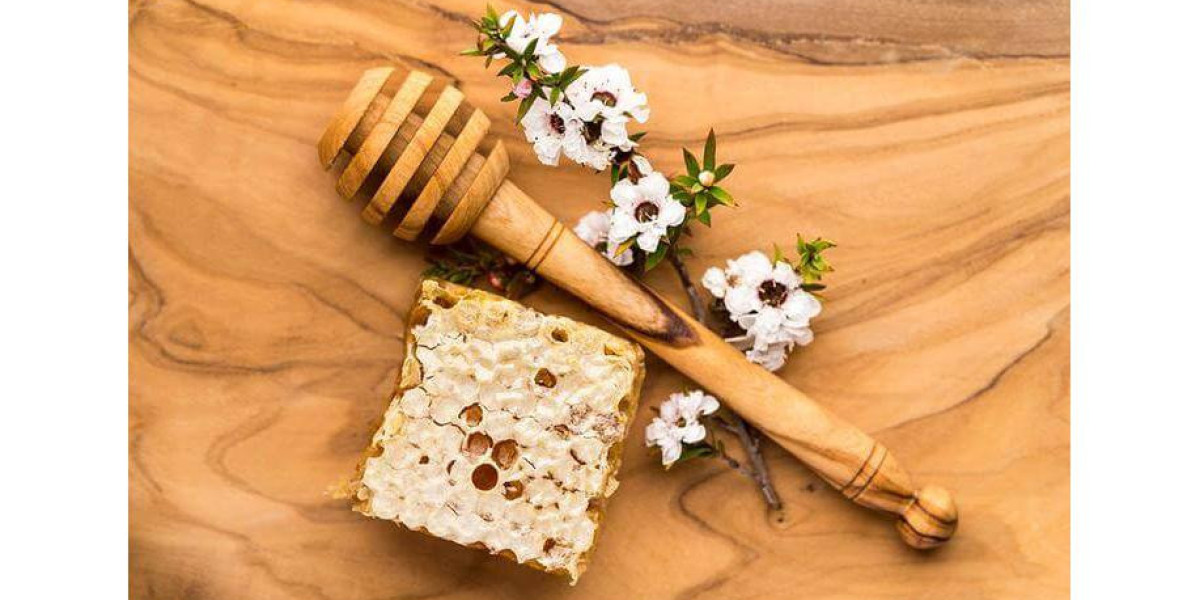Beyond Labels: What Really Matters When Choosing Medicinal Honey
Not all honey delivers the same benefits. Before you invest in a pricey jar, it’s worth understanding what separates the truly therapeutic ones from the rest.
The Confusion Around Healing Honey
A jar of honey can look innocent enough sitting on a store shelf, often marketed with gold foil, fancy fonts, or claims of ancient healing. But as demand rises for medicinal honey, so does the confusion. Health-conscious shoppers are often caught between labels boasting unique properties, different MGO ratings, and a wide range of prices. The challenge? Knowing which jar is actually worth your money—and which is mostly clever branding.
The growing popularity of therapeutic honey has created a market full of options that look similar but perform very differently. This often leads consumers to rely on packaging or price alone, without truly understanding the science behind quality indicators. Unfortunately, buying the wrong type doesn’t just waste money—it can mean missing out on real health benefits when they’re needed most.
When Buzzwords Take Over Science
It’s easy to get overwhelmed by the buzz around "natural remedies." While there’s nothing wrong with marketing honey as a premium wellness product, terms like "organic," "wild-harvested," or "ancient remedy" can distract from the real metrics that define potency.
Medicinal honey, particularly the kind people reach for when dealing with wounds, infections, or digestive issues, isn’t just about sweetness. It’s about bioactivity—the honey’s actual ability to fight bacteria, soothe inflammation, and support healing.
Many people don’t realize that these effects depend on very specific compounds within the honey. And those compounds vary greatly depending on where the honey comes from, how it’s processed, and how it’s stored. So while the packaging might look high-end, it might not deliver what your body needs.
The Solution Lies in Transparency and Testing
This is where science helps cut through the noise. If you’re seeking healing benefits, you need to look beyond aesthetics and focus on measurable indicators. One of the most widely recognized is MGO—short for methylglyoxal—a compound found in significant levels only in certain types of honey.
The higher the MGO number, the greater the antibacterial activity. Some jars will have an MGO rating of 100+, which is considered mild, while others like the best manuka honey products will reach 800+, 1000+, or even higher.
Another trusted grading system is UMF (Unique Manuka Factor), which also takes other active compounds into account. Products that are independently tested and certified for these ratings are far more likely to offer actual therapeutic value.
Case Study: Choosing the Right Jar in Parramatta
Let’s step into a real-world example. Sarah, a nurse living in Parramatta, had been managing a stubborn skin infection for weeks. Frustrated with topical creams that weren’t working and hesitant to keep using antibiotics, she turned to a local health store that carried a wide variety of honey jars claiming to be "natural cures."
She picked the most beautifully packaged jar on the shelf—it was labeled "organic healing honey," cost her $55, and was imported from New Zealand. But after applying it daily for nearly two weeks, she noticed no real difference.
When she spoke to a local naturopath, they quickly pointed out the issue: the honey had no certified MGO or UMF rating. While it might have been delicious, it lacked the key compounds required for the antibacterial effects Sarah was looking for.
Following expert guidance, Sarah switched to a lab-tested, MGO 850+ product—one that belonged to a line often included in recommendations for best manuka honey Australia wide. Within a few days, she began seeing clear improvement. Not only did the inflammation reduce, but the healing process finally kicked into gear.
This simple switch saved Sarah from spending even more on ineffective options and highlighted the importance of choosing quality based on science, not packaging.
What to Look for (and What to Avoid)
When shopping for medicinal-grade honey, you’ll want to keep these pointers in mind:
- Look for an MGO or UMF Rating: No rating? No guarantee of therapeutic benefit.
- Check for Lab Certification: Reputable brands will include third-party testing.
- Know the Source: New Zealand and Australia produce most of the world's medically potent manuka honey.
- Avoid Vague Buzzwords: Terms like "bioactive," "raw," or "healing" mean little without actual test results.
Remember, the jar that works best for your health doesn’t need to be the most expensive or most Instagram-worthy. It needs to be effective.
The Power Is in the Details
One of the most common mistakes people make is assuming that all honey offers the same benefits. While most honey has mild antibacterial properties, only specific varieties contain enough active compounds to be used medicinally. That’s why price alone isn’t a clear indicator—what matters more is the independent testing behind the label.
High-quality medicinal honey doesn’t just help with infections. It's also been studied for:
- Supporting digestion and reducing symptoms of gastritis
- Assisting with wound care and burns
- Helping to soothe sore throats and upper respiratory infections
- Potential anti-inflammatory support for skin conditions like eczema
These benefits only apply if the honey is authentic, potent, and stored correctly to preserve its activity.
Final Thoughts: Choose Smarter, Not Louder
The market for healing honey isn’t going anywhere—and neither are the misleading jars with no proof to back up their claims. Being an informed consumer means you’ll not only save money but also get access to the real health benefits you’re after.
If you’re ever in doubt, speak to a practitioner, look up the MGO or UMF rating, and avoid the temptation of pretty packaging. The most effective jar may not be the flashiest—but it will make a difference.



